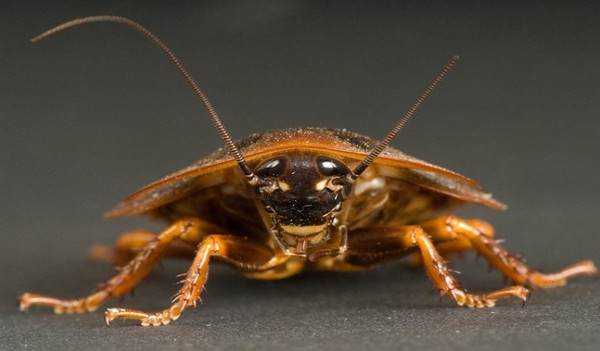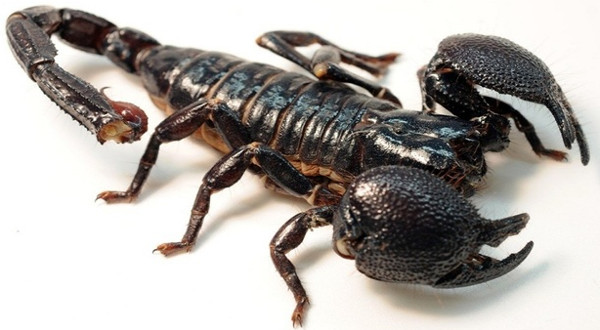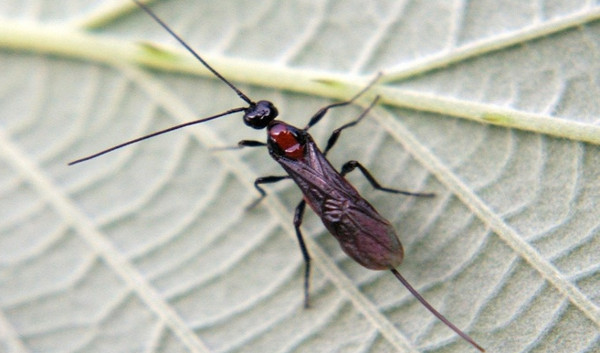10 creatures can survive the nuclear war
If nuclear war happens, will all end or mutant animals because of radiation will replace the dominant human on earth?
The truth is not so. With extraordinary stamina, many animals are not at risk of destruction by radiation and can continue to grow even if there is a nuclear war.
Cockroaches

The cockroaches were able to withstand radiation and were found not far from the place of Hiroshima nuclear bombs while all other creatures were wiped out. 10% of individuals can survive with the radiation level of 10,000rads. The ability of cockroaches to survive is a result of slow growth. The cells in their bodies regenerate every 48 hours, helping to lower the risk of mutations.
Scorpion

Scorpions are not affected by ultraviolet radiation . As a result, many scientists believe they can be subject to nuclear radiation. The scorpion also glows in the dark night and is likely to freeze pending the later revival.
Parasitic wasps

Parasitic wasps are a bee family specialized in laying eggs inside other species. They are one of the most life-sustaining creatures on Earth because of their ability to withstand up to 180,000 radioactive units. They can also be trained to sniff chemicals and explosives like professional dogs.
Lingulata

Lingulata is a special Latin name meaning the tongue due to its shell shape, a hand-rolled animal that lives on the ground, has a crust in the upper and lower parts. This animal survived many great extinctions without any effect and lived longer than 99% of the creatures that existed on Earth. They buried themselves and waited for the opportunity to develop after everything passed.
Fruit fly

Fruit flies can tolerate about 64,000 radioactive units. The small body size causes them to have less radiation-affected cells and smaller radioactive absorbing surfaces.
In contrast to other species with slow cell growth, fruit flies have extremely fast growth rates. This helps it evolve to change according to the living environment.
Mummichog

Mummichog is different from common fish in that they can live in any environment regardless of pollution, heat, cold or full of chemicals.They were once taken to the space station and survived. In 1973, they were taken to an experimental space station for experiments to survive: they swim and reproduce as usual.
According to scientists, this fish can regenerate body parts to easily cope with the new environment, thereby enhancing survival.
Sea bear

Sea bears, also known as tardigrade , are an extremely resistant bacteria that can survive in the most extreme conditions. They can be crushed, frozen, subject to boiling water, live in space and water-free. This animal can revive after 10 years of death. They are very small, have a length of 1.55 mm and are less likely to be affected by radiation.
Unicellular animals

Although it is the simplest living creature, it can be a precursor to future animals. When faced with adverse conditions, unicellular animals will produce a protective layer and the body falls into a state of " hibernation ".
With good radiation resistance and because only one cell, mutation is not a problem for them.
The number of unicellular animals is extremely large and small in size, they will be able to survive the nuclear disaster.
Deinococcus Radioduran bacteria

Dubbed "Conan" , if it doesn't survive, nothing can exist.
With the ability to repair DNA at a very fast pace, they are being used in many fields, from pollution cleaning to medical research.
Up to this point, the secrets of Conan's ability to remain bacteria have yet to be discovered.
Human

Because humans are scattered throughout the world, if nuclear war happens, it is unlikely that everyone will be affected by radiation. In addition, humans have many opportunities to run to the bunkers to avoid radiation, thus the ability to maintain life is high.
- How to survive the nuclear disaster
- Strange creatures do not have both anus and anus, but survive for over 500 million years
- Nuclear reactors can go to Mars
- Detecting concussions about 20 species of strange creatures in Antarctica
- Unprotected creatures still survive in the universe
- The benefits are endless from whale carcasses
- Why are cockroaches tolerant to radiation but destroyed by insecticides?
- How will nuclear war destroy Earth?
- Nuclear button of the US presidential life, it is now revealed
- What happens to the Earth after a nuclear war?
- Apart from cockroaches, which creatures can lose their heads and still survive?
- Sand creatures
 'Fine laughs' - Scary and painful torture in ancient times
'Fine laughs' - Scary and painful torture in ancient times The sequence of numbers 142857 of the Egyptian pyramids is known as the strangest number in the world - Why?
The sequence of numbers 142857 of the Egyptian pyramids is known as the strangest number in the world - Why? History of the iron
History of the iron What is alum?
What is alum?